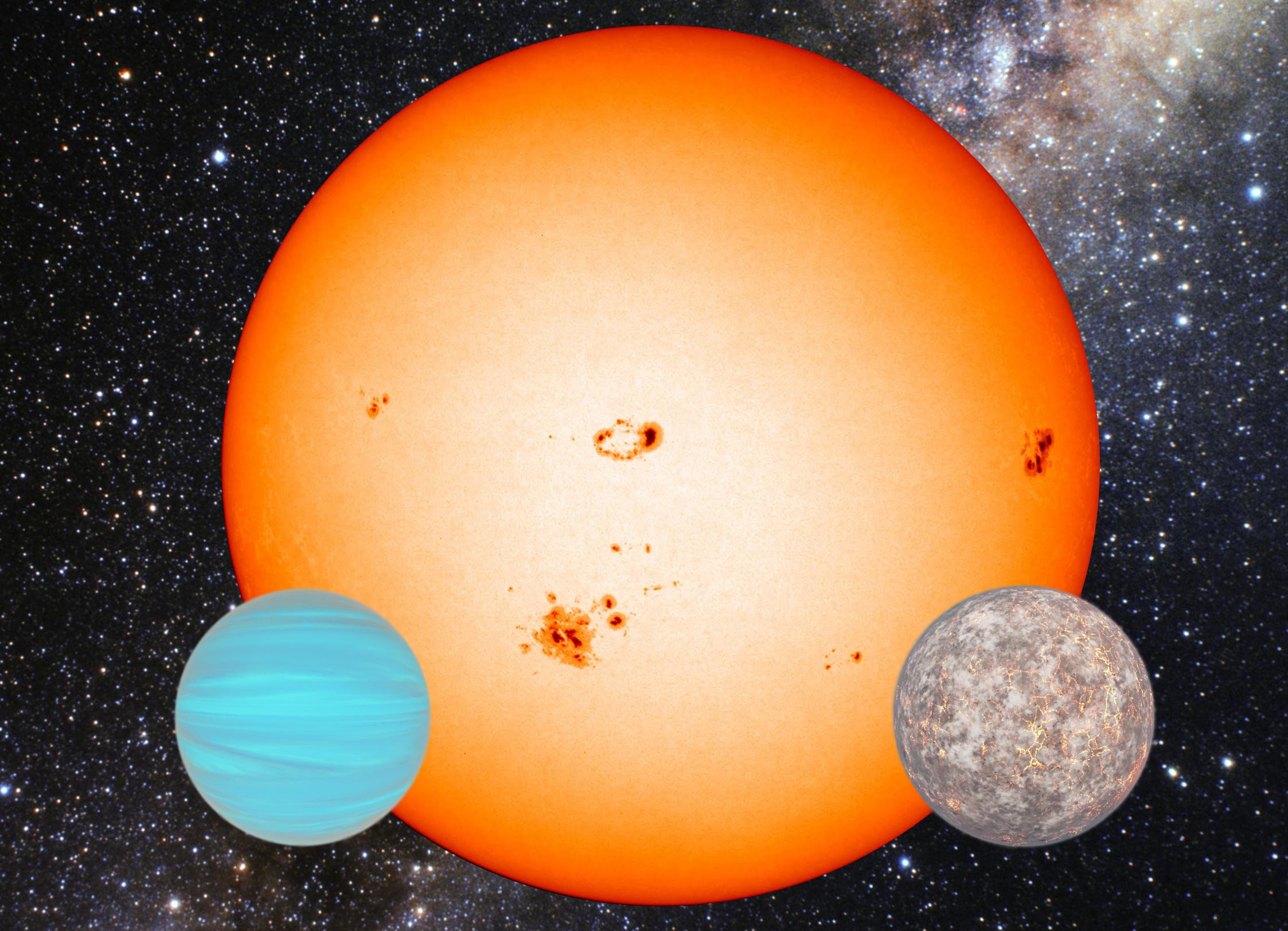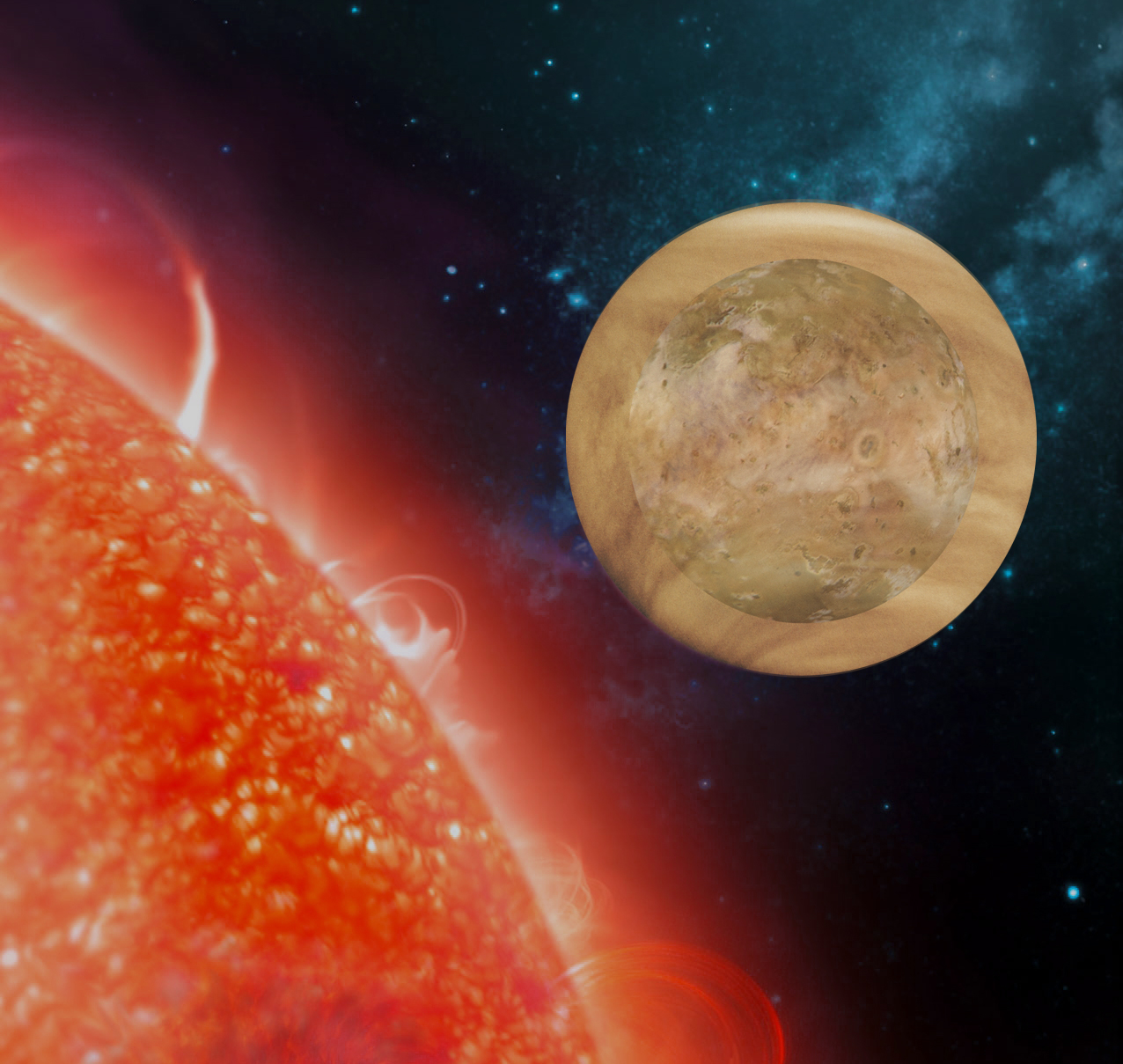



 | The first method to rank transiting habitable planets for their potential to support life (Barnes, Meadows & Evans 2015)! The "habitability index for transiting exoplanets" (HITE) can be ued to prioritize follow-up observations, including spectroscopic characterization with JWST. We find that the best planets receive 60-90% of Earth's incident radiation and that Kepler discovered ~45 potentially habitable exoplanets. |
 | Resonant exoplanets with inclinations can evolve chaotically for billions of years (Barnes et al. 2015)! Orbital eccentricities can grow to over 0.9999 and inclinations can reach 179.99 degrees. This can lead to tidal circularization, spin-orbit misalignment, and, on Earth-like planets, chaotic climates. Thanks to Universe Sandbox for help with the image (planets and star not to scale). |
 | A new method to determine the boundary between rocky and gaseous planets based on tidal theory and transit durations (Barnes 2015)! Terrestrial planets should circularize more quickly than giant planets, and so we expect the transit durations of close-in terrestrials to be consistent with circular orbits to a larger orbital period than the giants. |
 | Tidal heating on planets in the habitable zone of M dwarfs can be large enough to trigger a runaway greenhouse (Barnes et al. 2013)! Even though a planet is in the habitable zone, the tidal heating can be strong enough to preclude life. Even if the orbit is circular today, tidal heating during an initial eccentric phase can persist long enough to dessicate that planet. |